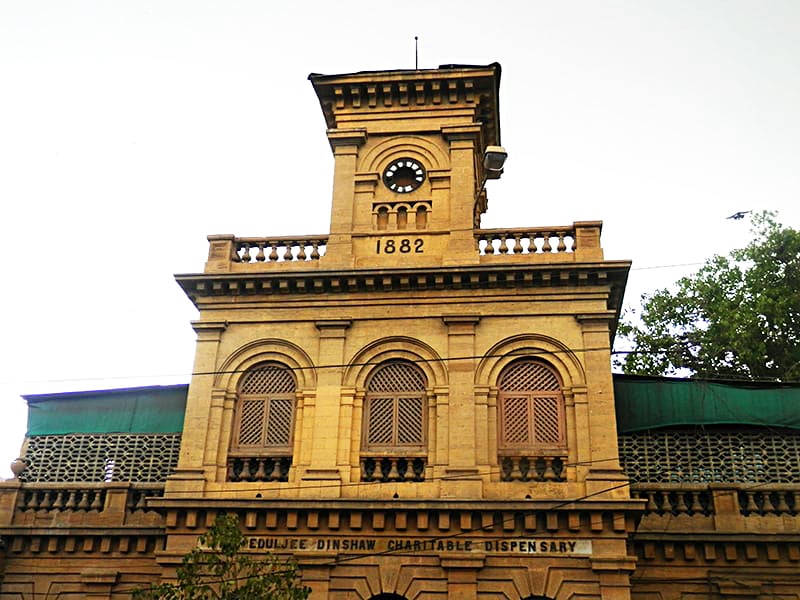The father was Edulji Dinshaw, and the son Nadirshaw Edulji Dinshaw. Karachi today has hospitals, educational institutes and residential colonies that are products of their selfless efforts to help the metropolis develop.
But, according to the Parsi writer FK Dadachanji in his book Parsis, Ancient and Modern: Never Before Has So Much Been Achieved By So Few , the only thing Karachi gave the Dinshaws in exchange for their favours were statues. Unfortunately, Dadachanji doesn’t say where to find these statues.
Before the Partition, Karachi had a number of these statues in memory of the people who had served it. After 1947, though, the statues started disappearing. The list of the vanished includes those of Mahatma Gandhi and Jawaharlal Nehru. The Land of the Pure does not allow the impure practice of erecting statues in the country.
The Dinshaws were eminently worth memorialising. A hundred and thirty years ago, Edulji Dinshaw established no less than 12 public hospitals. In 1885, the Vicerine of India, Lady Dufferin (wife of Frederick Hamilton-Temple-Blackwood, Viceroy of India from 1884-1888), announced the Countess of the Dufferin Fund to provide medical services to women across India.
Sindh province donated a total of Rs 10,000. The Dufferin Fund committee itself donated Rs. 5,000 rupees. The sum was not sufficient to build a hospital, so the project was stuck for almost a decade. In 1894, Edulji Dinshaw donated Rs. 50,000 to the fund, making the project possible.
During the construction, changes in the design caused the cost to jump up a bit, Dinshaw voluntarily provided for it all. Not only this, Edulji Dinshaw also bought the hospital's first consignment of medicinal supplies, while his son Nadirshaw Dinshaw donated furniture for it. In the end, while the total donation by the committee and the province amounted to a mere Rs. 15,000, the Dinshaws donated Rs 85,000. That is evidence of what Dadachanji calls the Zartashi jigra or the Zoroastrian spirit.

The dispensary set up in 1882 by Edulji Dinshaw near Empress Market in Karachi.
In addition to his contributions to public health, Edulji Dinshaw was also a passionate supporter of education. He donated hundreds of thousands of rupees to the Bombay University to finance the education of students in need. The Mama Parsi School in Karachi and the Sardar Dastoor Girls School in Pune benefited from his generosity.
The most noteworthy example of his efforts is the engineering institute in Karachi that many aspiring engineers dream of gaining admission in – the NED University of Engineering and Technology. It is among the top engineering universities in Pakistan. Almost every educated Pakistani knows about the institute but not everyone knows that NED stands for Nadirshaw Edulji Dinshaw.
Despite several efforts, I was not able to find the two statues FK Dadachanji mentions – sadly, the only thing Pakistan did give back to the Dinshaws seemed untraceable.
One day, my friend Akhtar Soomro, a senior photojournalist, told me that he was going to the Parsi Institute to attend a lecture. I decided to tag along, hoping to get a tour of the place. To my disappointment, I was politely turned away because the event was “invitation-only”.
However, when I saw Soomro the next day, he was kind enough to share his experience of the lecture.
“It was a nice place. As I entered the premises, there was a statue…” He must have gone on, but I stopped listening after the word "statue".
I had to see it with my own eyes. The Parsi Institute is located on the route from Lines Area to Saddar. While the building is somewhat nondescript, it does have a spacious lawn and to the right, I could see a statue. I drew near to behold Mr Edulji Dinshaw carved in stone.
I was relieved to see it intact.
Another friend, Akbar Baloch, later told me that I had missed a whole other statue, that of Nadirshaw Dinshaw.

Statue of Nadirshaw Dinshaw.
Several years ago, the statues were transplanted from their original locations to the Institute. Other statues have been damaged in the process of transporting them to new sites. Queen Victoria, for instance, lost its limbs and nose. But the Dinshaws made the journey intact.
The plaques on these statues give some information on their original locations. Edulji Dinshaw once stood on what was Victoria Road, which is now known as Abdullah Haroon Road.
Nadirshaw Dinshaw’s spot on Bonus Road as been replaced by a clock tower. The street has become Fatima Jinnah Road.



The spot near Metropole Hotel where the statue of Nadirshaw Dinshaw once stood.
Though the statues are gone, would it be too much to at least name the two intersections after the great father and son who contributed so much to Pakistan and have their services acknowledged in some form?
All photos are by the author and taken with permission of the Parsi Institute.
This article was originally published on Dawn.










